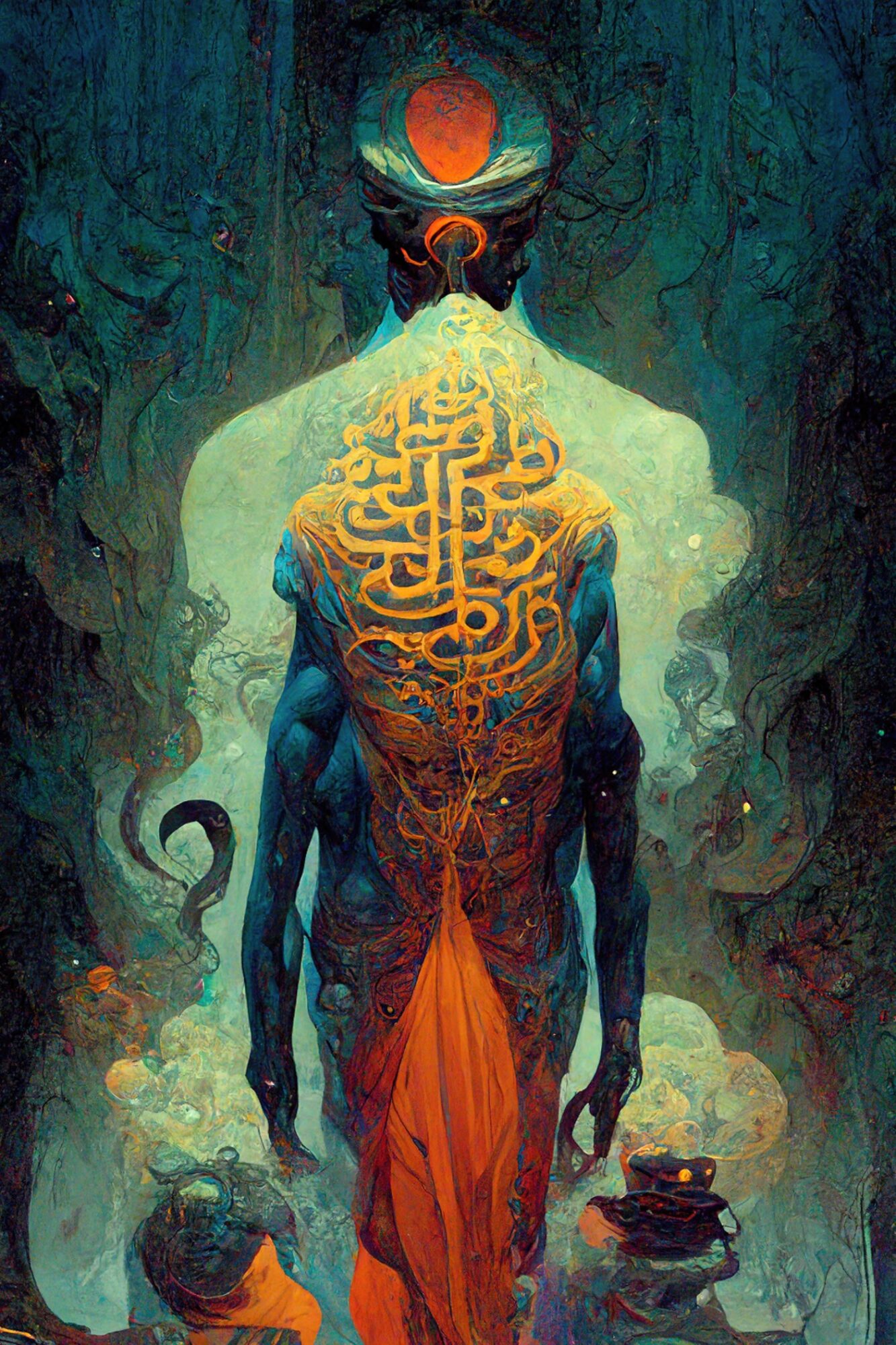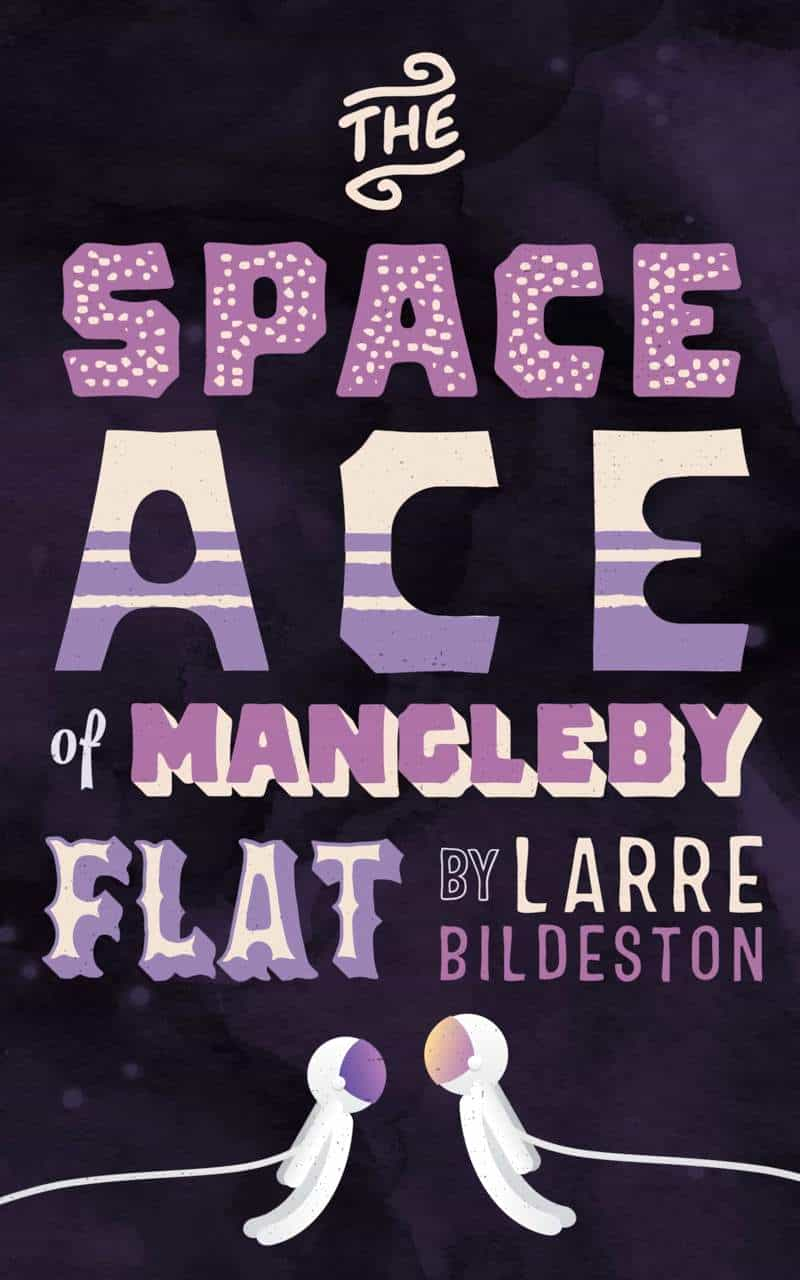Abu Al-Jann
Father of the Jann.
Aforetime
God said he created the djinn ‘aforetime’. Stories of the djinn predate the Quran. The concept of the djinn is ancient.
Aladdin
Disney’s Aladdin is a presentation of a stereotypical genie as we view them in the West. Aladd in is only loosely based on the folklore of the djinn. Like “Ali Baba”, “Aladdin” is a French-Syrian tale dating from the start of the 1700s. “Aladdin” is such a popular and widespread story that it forms its own tale type (ATU 561). There’s a simpler version known as a Magic Ring tale (ATU 560). In these tables a poor young man with the help of a magic object builds a palace more beautiful than the king’s. He marries a princess. But he loses his palace and princess due to a second magic object. He recovers everything lost.
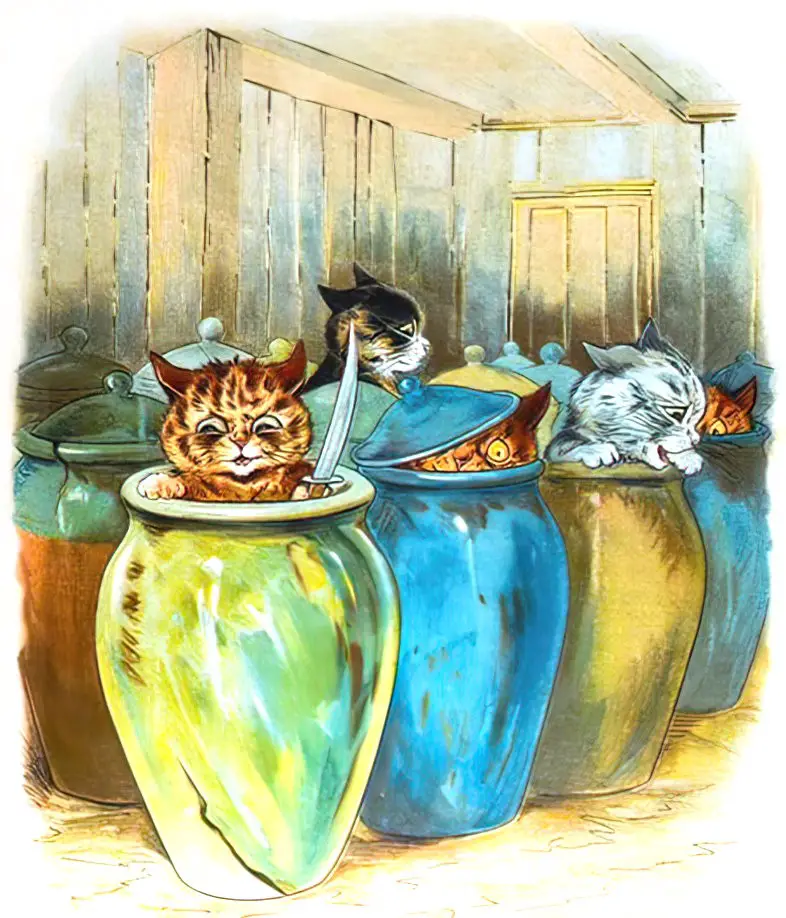
If you’d like to hear “Aladdin” read aloud, I recommend the retellings by Parcast’s Tales podcast series. (They have now moved over to Spotify.) These are ancient tales retold using contemporary English, complete with music and Foley effects. Some of these old tales are pretty hard to read, but the Tales podcast presents them in an easily digestible way. “Aladdin” (parts one and two) was published October 2019.
Aladdin and the Wonderful Lamp
In the Magic Ring story “Aladdin and the Wonderful Lamp”, Aladdin has many moral shortcomings: he is lazy, undisciplined and even responsible for the death of his own father. In the end Aladdin becomes good and wise. To become good and wise he must first undertake a mythic journey to the underground realm and symbolically die. It’s dark down there. He gets hungry and thirsty. That’s when he remembers God. He accidentally saves his own life by putting his hands together in prayer and rubbing his magic ring, which summons a genie. Errol Cain’s illustrations below have a symmetrical composition with elements of Art Nouveau. The story it illustrates is likewise symmetrical in shape; Aladdin loses everything, is threatened by the king and summons the genie again, who takes the guy back to the palace, where the princess has also been taken.
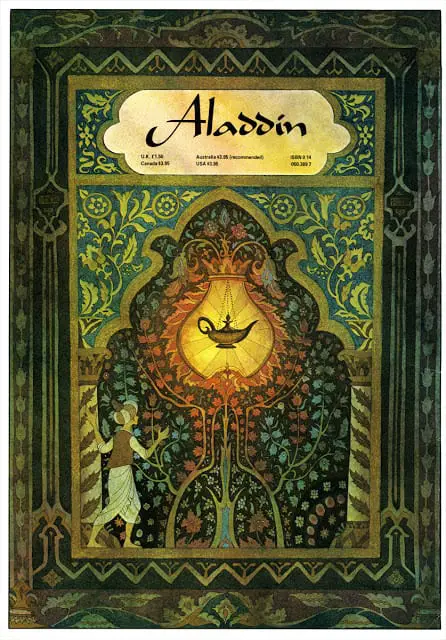
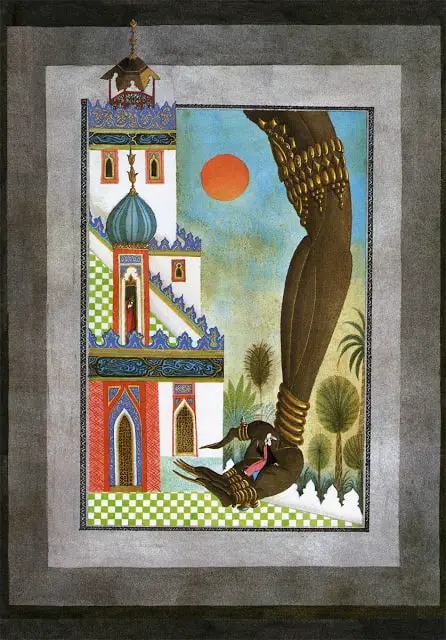
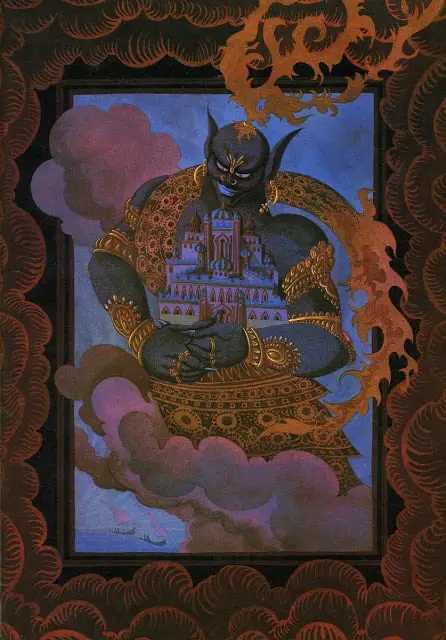
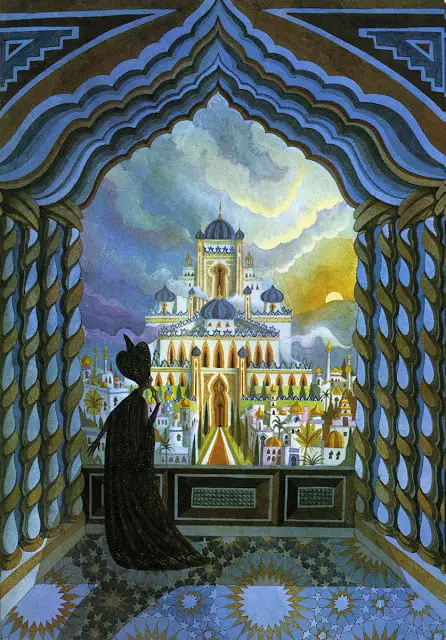
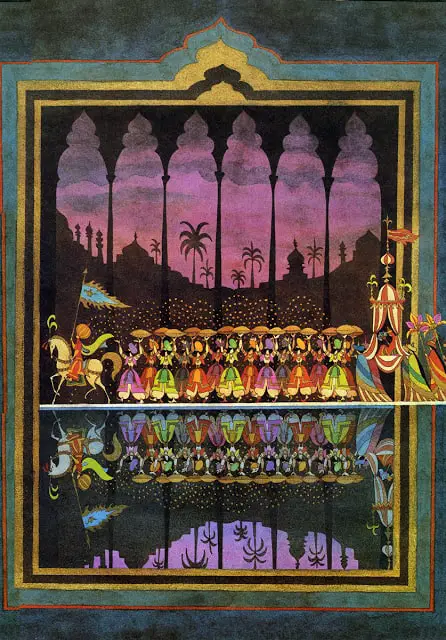
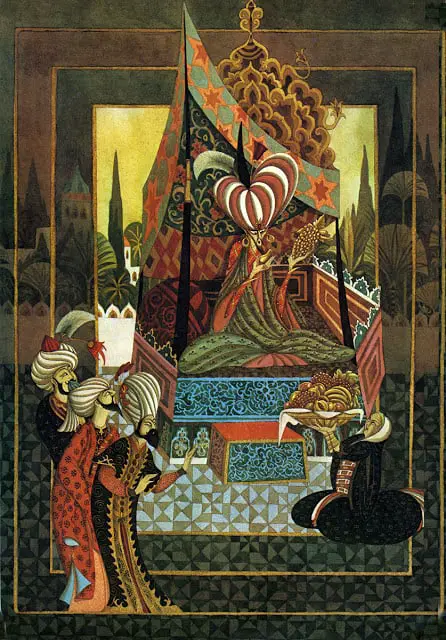
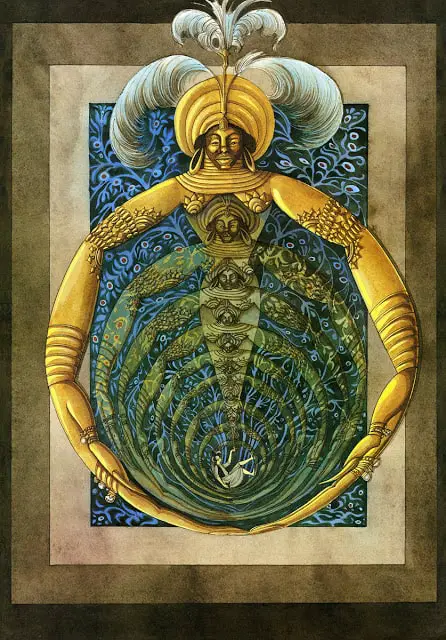
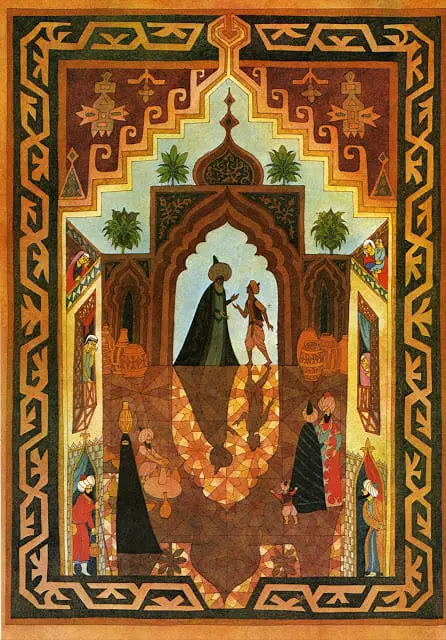
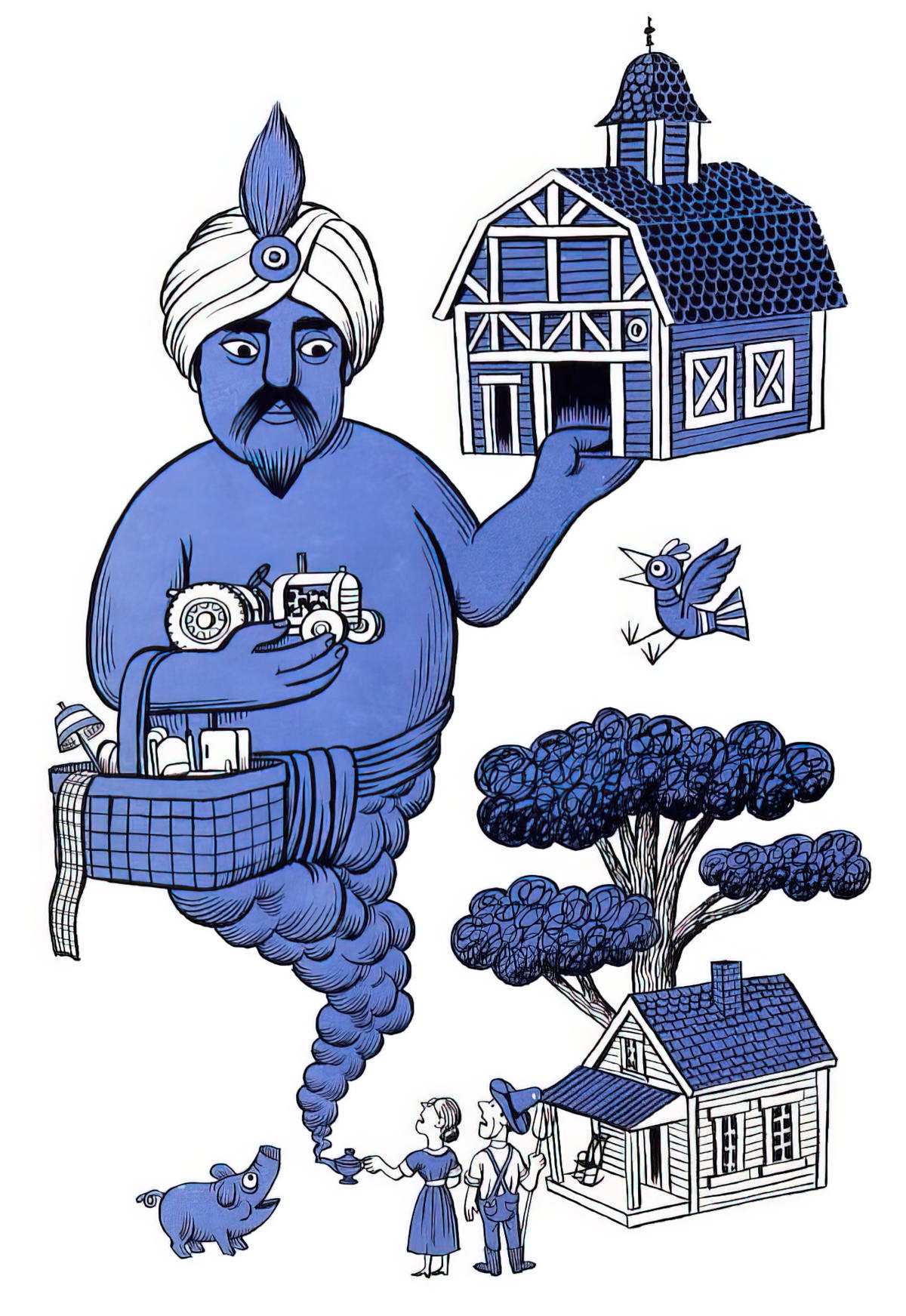
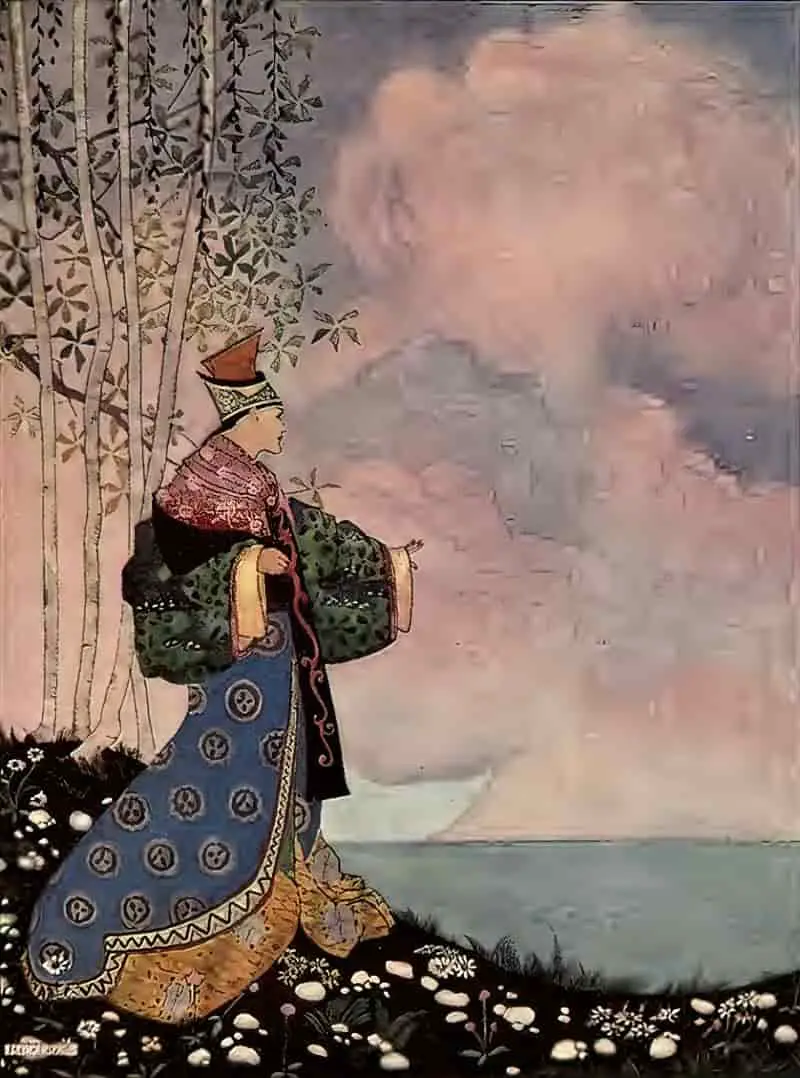
Animals
Unlike humans, who have been spared the sight of djinn, animals can see them. (So can humans when we are very young.)
Apuku
Djinn spirits from the Afro-South American folklore of Surinam. Apuku live in natural clearings in bushland and jungle. They look like European dwarfs but scary, and powerfully built.
Arabian Nights
The English title for 1001 Nights, a collection of Middle Eastern folktales put together during the Islamic Golden Age (8th and 14th centuries).
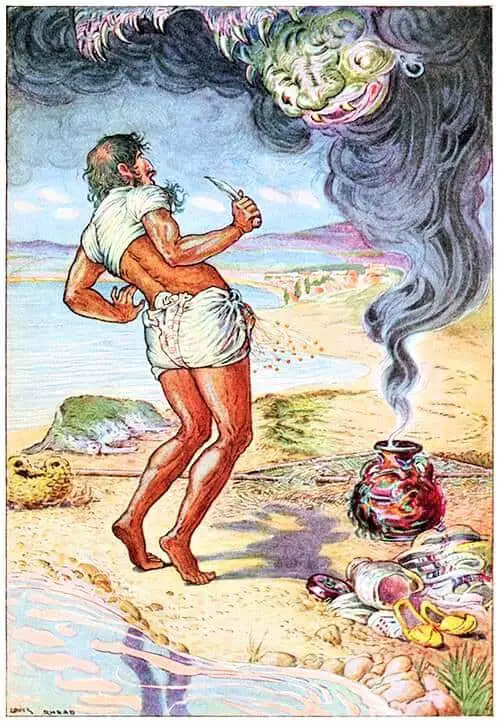
Asmodeus or Ashmedai
“prince of demons”, or in Judeo-Islamic lore the king of the earthly spirits, one of the most powerful Djinn. Asmodeus represents lust. This Djinn is mentioned in the Testament of Solomon. He told Solomon that he’s the offspring of an angel and a human woman. (Maybe he’s claiming to be one of the Nephilim from the Old Testament.) He interferes in people’s relationships and causes enmity between lovers. This guy is still really annoyed about what went down with King Solomon. (Remember Djinn live for thousands of years.)
Asoom Jan Tanushi
according to North African lore, this is the name of the first ever Djinn created by God. His progeny inherited the earth and ruled over it for tens of thousands of years before humans were ever on the scene. He gave rise to 72 djinn kings.
Bismilaah
Say this when doing something private. Parents say this when changing their baby’s nappy or undressing them for a wash to protect them from the evil eye and bad Djinn. This puts a barrier between yourself and the evil eye. Also say say Bisimilaah before every meal to protect yourself from contaminants in food.
Children
Very young children can sometimes see djinn, the same as animals. Sometimes when a baby cries and you can’t work out why, it’s probably because they’ve been frightened by a djinn. (It’s thought that kids can see angels, as well.) If a young child seems to be laughing for no reason that could be because an angel is playing with them. An imaginary friend might be a djinn. Linguists have a different explanation for babies babbling: Babbling is a stage in child development and a state in language acquisition. An infant is experimenting with uttering articulate sounds and will eventually start producing recognised words.
Djinn (Jinn), general
the tentpole supernatural creatures of Islamic and Arabian mythology. We don’t know the etymology of this word but it translates to ‘hiding’ or ‘being concealed’ (as in, from our earthly senses). The djinn occupy another dimension. They occasionally enter our dimension and influence us, but most have no desire to enter our dimension at all. They have families, nations, religions and tribes. They walk among us every day and we don’t notice their presence. They can see us but we can’t see them. This is God’s mercy. We’re better off not seeing them because we’d be terrified of them. Like fairies, the djinn can exist at any point on the moral spectrum. While most are uninterested in us, some are out to harm us, and others help us. Misplace your keys and suddenly find them? That was a djinn helping you out. (Other cultures have the concept of the hobgoblin for this purpose.) In the broadest sense, all supernatural and unexplained phenomena is Djinn: crop circles, UFOs, professional magicians, everything. Even conspiracy theories in parts of the world include Djinn interference (e.g. whispering into the ears of suicide bombers).
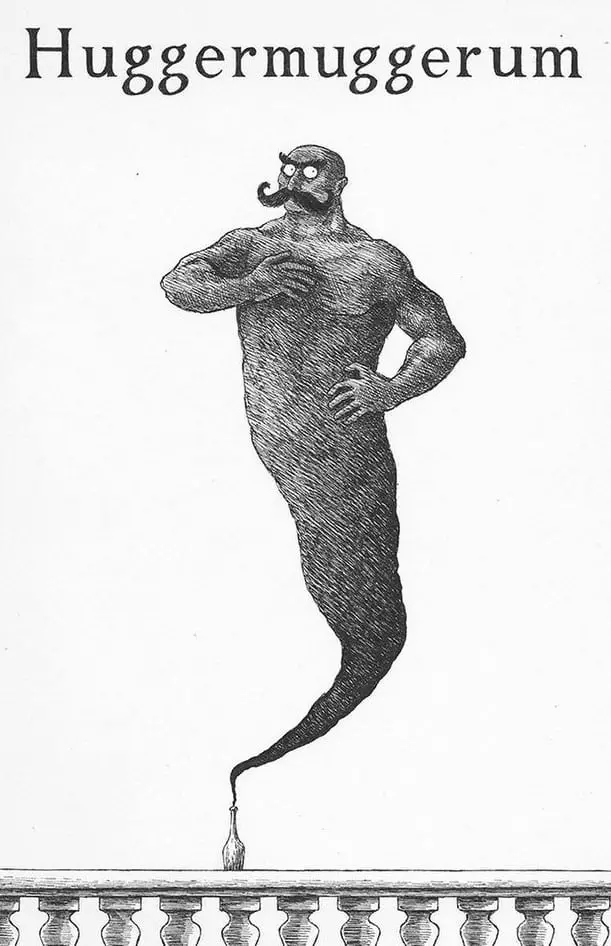
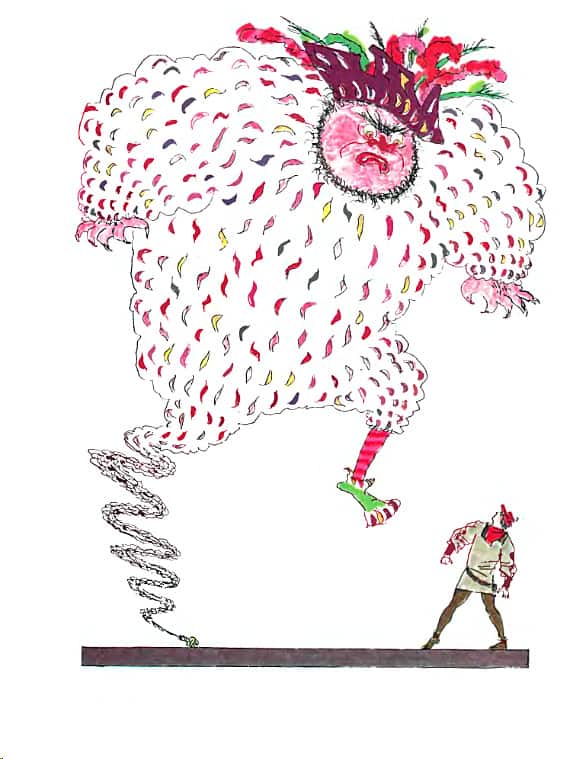
Djinn (Jinn), specific
The term jinn is used for both a collective designation for any supernatural creature but also refers to a specific type of supernatural creature.
Eldritch Abomination
This is the name often given to the big, evil force in Cosmic Horror (closely connected to the Lovecraftian genre). Although there’s no official connection between this kind of opponent and the Djinn, both predate religion and even predate humans.
Eve
According to one djinn origin story, Eve, wife of Adam, gave birth to 40 offspring, but could only care for half of them. She got rid of 20 and lied to Adam that there had only been 20 in the first place because, y’know, women are inherent liars. But Adam knew she was lying. He prayed to God that his lost children be allowed to live beneath the earth and only allowed to venture out at night, when the rest of humankind was asleep. These 20 subterranean lost children became the Djinn. Another origin story is very much like that of Adam and Eve: God created the first male Djinn from burning wind, and only then created a mate because men require mates. Their union resulted in 30 eggs. Each egg released a different kind of Djinn.
Evil eye
Many sheikhs believe that women and children are far more likely to get possessed and do more often get possessed or harmed by jinns and are affected by the evil eye.
Fitra
the state of purity and innocence Muslims believe all humans to be born with. Like humans, djinn are born with fitra.
Flight
Some djinn can fly, including interstellar flight. They can get close enough to Heaven to hear the secrets of mankind’s fate. But they don’t make it there often, repelled by fire from archangels. According to Islamic exegetical tradition, the four archangels are Gabriel, Mika’il, Raphael and Azrael.
Four main kinds of Djinn
- The kind who live among humans
- The kind who inhabit our homes and live alongside us, mostly without bothering us but sometimes letting us know they’re the boss, e.g the kind that terrify parents by communicating with your young child
- The powerful Djinn who can be summoned by black magic and who do the opposite of what they’re commanded. They live around water elements, basically terrifying mermaids. The largest, strongest and fastest (Ifrit). They come in all shapes and sizes and are the most evil of all. The evil spirits that come back to avenge for horrible deaths are also in the same category as this kind of Djinn
- The Qareen. Our constant companions. This Djinn is assigned to us at birth and dies with us when we die. The Babylonians and Assyrians believed something very similar. For modern Christians, the guardian angel is the closest concept to the constant companion. Not everyone thinks these Djinn are protective (unlike guardian angels, which are). This is similar to the Familiar (the animal companion to a witch, or more broadly, a doppelganger/totem spirit/personal demon). These are the Djinn who sit on your shoulder and try to lead you astray. Keep a Qareen in check by doing good things. They rise up and become more powerful when we do bad things.
Nobody’s perfect. There was never a perfect person around. You just have half-angel and half-devil in you.
Days of Heaven, Terrence Malick (1978)
Free will
Like humans, djinn have free will.
Genie
The English version of ‘djinn’. It comes from French via the Latin word ‘genius’ (a Roman guardian spirit). The term ‘genie’ was used in translations of the 1001 Nights (Arabian Nights).
Ghosts
How are djinn different from ghosts? They are a lot different. Ghosts are generally thought to be the part of a person which survives after someone dies, and for some reason they’re hanging around us rather than moving on to the spirit world. The djinn are very much like us. Living in a different dimension doesn’t absolve them from the need to work for a living. That said, there is a Djinn which follows each of us our whole lives. It knows every single thing about us, including all of our deepest, darkest secrets. After you die this personal djinn can appear as you. Sometimes they’re doing this with benevolent intent, e.g. to comfort your family. (An episode of Black Mirror uses technology for this purpose.) Or they might be reappearing as you to mess with people and create havoc and mischief. Like ghosts they can appear anywhere, as if by magic. Muslims don’t believe in ghosts per se; they believe djinn explain the phenomenon of ghosts. Like poltergeists, djinn can move objects in the physical world.
Ghoul
a djinn associated with graveyards and consuming human flesh. One of the three Djinn thought to coexist and interact with humans (along with the marid and the ifrit). The oldest surviving literature that mention ghouls is likely One Thousand and One Nights. We see this enter the English language in 1786, in William Beckford’s novel Vathek, which describes the ghūl of Arabian folklore. Aspects of both the apuku and rabisu djinn are found in the ghoul.
Hatif
Hatif (‘calling, shouting’) is a voice that can be heard without one’s discovering the body that made it.
Hinn
Hinn are supernatural creatures, besides jinn and demons, in Arabian lore and also a group of pre-Adamitic race in Islam-related beliefs. According to some folklore, hinn are believed to be still alive and take the shape of dogs.
Ifrit
One of the three Djinn thought to coexist and interact with humans (along with the ghoul and marid). They generally marry each other but can also marry humans. The Ifrit (“strong one”) is a powerful giant djinn. Like Western depictions of Satan, they have horns on the head and hooves instead of feet. (Weird feet is common in bad supernatural creatures across cultures.) The ifrit live underground, in ruins, and in desert wastelands. Kenyans believe they lurk in the muddy depths of pools and rivers. The genie who comes out of the bottle in 1001 Nights is in fact this evil kind of Djinn. Also find Ifrit in True Blood, Final Fantasy (the computer game) and Neil Gaiman’s American Gods.
Iron
Djinn are said to be repelled by iron. It causes them pain and harm. We also find this in common with other fairy lore and vampires (along with salt).
Islam
Muslim people believe djinn to be real. Djinn are not simply a character from folklore. There’s a chapter in the Quran about them, called “The Djinn”. In total, the Djinn are mentioned 29 times. There are recitations from the Quran you can use to protect yourself from a troublesome Djinn.
Islamic Golden Age
a period of cultural, economic, and scientific flourishing in the history of Islam, traditionally dated from the 8th century to the 14th century. The metaphor of a golden age began to be applied in 19th-century literature about Islamic history, in the context of the western aesthetic fashion known as Orientalism. During this golden age, the Islamic Empire paid their academics the way the West pays top athletes today — handsomely. As a result, much scholarly breakthrough happened in the Middle East during this era. We can think the Islamic Golden Age for many breakthroughs in mathematics, biology, surgery, art. law etc.
Jann
Jann is the ancestor of the jinn in Islam-related beliefs. They are said to have inhabited the earth before Adam, ruled by a king called Jann ibn Jann. In folklore however, many consider them to be punished and turned into the weakest class of jinn, comparable how apes are seen as transformed humans. The father of the jinn is also called Abu Al-Jann.
Lanterns
After God told the Djinn that they should bow to man’s superiority, and their leader, Iblis, refused to do so; Suleiman stuffed a bunch of them (as well as other holy men) into lamps and lanterns. This idea has much in common with the Pandora mythology. Let the djinn back out of the lantern and you’ll start some drama.
Marid
The Marid are the strongest tribe of the Djinn, said to have large strong bodies, and a powerful presence. One of the three Djinn thought to coexist and interact with humans (along with the ghoul and the ifrit). If you witness one of these in its full form, the vision will send you mad. (This is a trope used across the genre of cosmic horror.)
Mortality
Like us djinn are mortal, but they live much longer lives than we do (some for thousands of years). Although you can kill them, it’s not easy as they have very few weaknesses.
Nasnas
In Arab folklore, the Nasnas is a monstrous creature. According to Edward Lane, the 19th century translator of The Thousand and One Nights, a nasnas is “half a human being; having half a head, half a body, one arm, one leg, with which it hops with much agility”.
Onoskelis
(“she with the ass’s legs”) A female demon with a beautiful form mentioned in the Testament of Solomon. The name is usually associated with the hobgoblin, Empusa, who was able to assume various shapes, however in this case, she is a satyra (female satyr). She lives in caves and jungles. She seduces and strangles men.
Pride
One of the Seven Deadly Sins, pride is considered a feature of the djinn. This is their main psychological and moral weakness. This is clear from reading the 1001 Nights. Cf. “The Fisherman”, in which a trickster fisherman escapes certain death by making use of a wrathful djinn’s pride. The djinn is so annoyed at being locked inside a lantern for so long he wants to murder the person who lets him out. The fisherman understands the djinn’s inherent pride and wonders aloud how such a magnificent creature could ever fit into such a tiny vessel. The djinn takes this as a personal challenge and puts himself back inside the lantern.
Possession
Djinn are said to be able to possess humans (with similar symptoms, including seizures, violence and speaking unknown tongues) and can be exorcised from the human body through rituals. An Islamic exorcism feels similar to a Catholic exorcism; both include recitation from a religious text as a way of getting rid of a demon who has possessed someone.
Qareen
A Qareen (‘constant companion’) is a spiritual double of human, either part of the human himself or a complementary creature in a parallel dimension. Due to its ghostly nature, the Qareen is classified among the Djinn-type creatures, although usually not actually a Jinni.
Rabisu
According to Akkadian mythology, Rabisu (“the vagabond”) is an evil vampiric demon that guards the entrance to houses and lurks in dark corners, waiting to attack people.
Ring of Solomon
The Ring of Solomon (or Seal of Solomon) is the signet ring attributed to King Solomon in medieval Arabic tradition, from which it developed in Islamic and Jewish mysticism and in Western occultism. It is the predecessor of the Star of David, which became the symbol of the Jewish people in modern times. Solomon lost the ring when a Djinn impersonated him and ruled his kingdom for a full 40 days. Some say that Solomon got it back, others not. No one knows where the ring is today, but it’s meant to be buried on some island along with the king’s sword and crown. According to some legends, they won’t reappear until end times, when the great apocalyptic beast appears. We’ll know who he is because he’ll be wielding Solomon’s staff and seal.
Salt
Djinn are said to be repelled by salt. We also find this in common with other fairy lore and vampires.
Satan (Iblis)
The Islamic equivalent of Satan (Iblis) is considered a djinn. He was adopted by the angels because he was a devout servant of God and it was said that just one of the creators would live for up to 600 years. But when God decided to create mankind, Iblis became proud and jealous. He refused to bow down to an inferior creature. For his arrogance he was cast into hell. This is a story we see all over the world. Since this all played out, Satan has been trying to undo humanity and take us far away from belief in God.
Shapeshifter
Some djinn are shapeshifters called Sila (Si’la or Si’lat literally: “Hag” or “treacherous spirits of invariable form”). These spirits are one of the most malicious class of jinn. They tend to be female and human. Despite their impressive shapeshifting abilities, they can be discovered by their hybrid appearances of animals. They almost always turn into a black dog, a black cat or a black snake. They’re usually harmless but they’re dark in nature and just enjoy frightening us. These shapeshifting djinn are said to live in the most desolate parts of the desert where they lead travellers and nomads to their deaths. They are also said to seduce and marry men or even give birth to a child from a relationship between human and jinn. This lines up with the idea of the succubus, though not all Djinn shapeshifters are succubi and not all of them female.
Shaitan
Shayāṭīn (devils or demons), singular: are evil spirits in Islamic belief, inciting humans to sin by whispering to the heart via waswasaħ (“whispering”). They try to lead humans astray. Although demons are usually spoken of in abstract terms, and more often described by their evil influences only, they are depicted as ugly and grotesque creatures of hell-fire.
Sin
It’s said that we have an angel on one shoulder, and a companion genie on the other. The angel records our good deeds; the genie records our sins. The genie gets a bit bored if you don’t commit enough sin, so they will start whispering in your ear to commit more sin. The genie who sits on your shoulder is competitive with the angel and wants you to commit more sin than good deeds. A competitive nature is another of the Djinn’s flaws.
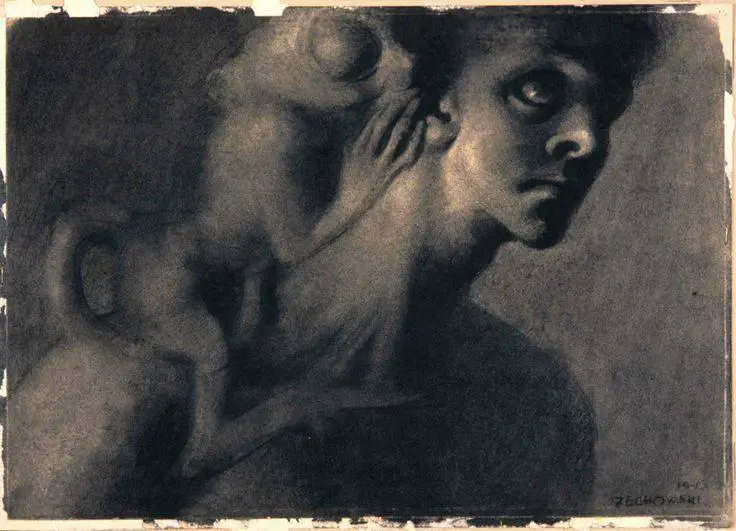
Smokeless flame
The djinn were created before humans, and are thought to be made from smokeless fire and wind (air elements). In contrast, humans are made out of muddy clay (earth stuff) and angels out of pure light. The very edge of the flame is, according to the Quran, the purest part of it. Smokeless fires are an actual thing. (They’re also called ‘stealth’ fires.) Not everyone takes this origin story of the djinn literally. Maybe the term ‘smokeless flame of a scorching wind’ means ‘energy’ more generally, untethered by the same physics which bind us. Many religions and cultures talk about an inexplicable energy contained within us, sometimes called ‘souls’.
Solomon
The great Biblical king. Djinn are thought to have been enslaved by Solomon. He had a superpower — controlling the Djinn. This is precisely how he came to be one of the most powerful world leaders ever (according to Muslim tradition). The city of Jerusalem along with its walls is said to have been built using Djinn slaves, commanded by King Solomon. He enslaved some of the Djinn and locked others up in iron containers. Thousands of them are probably still locked up til this day. One day he was leaning on his staff watching over his slave Djinn at work when he died. But no one knew he had died because he didn’t topple over. His body stayed upright for ages, so the Djinn continued to slave away under the impression they were being surveilled. King Solomon’s death was finally realised when his flesh was eaten through with worms and he toppled over. After that, the slave Djinn were free.
Teleportation
The djinn have the power to travel in an instant from one spot to another. There’s a type of djinn who follows you your whole life.
Testament of Solomon
dates from c. 200 C.E. This magical text is believed to have its origins in the first century. Though not considered Biblical canon, it’s thought to have been written by King Solomon himself. It is supposed to be a firsthand account of the building of the first temple. There’s mention of Djinn in this. King Solomon grew fond of the son of one of the builders. This boy grew sicker and sicker. This is because a Djinn was sucking the boy’s life force right out of his thumb. Solomon prayed to God that he would have the power to overcome this Djinn. The archangel Michael brought him a bright ring so shiny Solomon could hardly look at it. (The Ring/Seal of Solomon). The ring allows Solomon to control every Djinn across every dimension. The Testament of Solomon includes a list of the Djinn that Solomon called to appear before him. He sentenced them like a judge after forcing them to account for their misdeeds.
Tricksters
Because of their pride, djinn can be tricked by humans. But some djinn (for instance the ones who can fly near Heaven) are pretty good tricksters themselves. They get a hold of our secrets and feed us false information, e.g. via fortune tellers or soothsayers. It is forbidden in Islamic traditions to get your fortune told. You’re most likely being told half-truths.
Twilight Zone, The
The Twilight Zone is a well-known American series of supernatural TV shows drawing on folklore from various sources, and is influenced by the mythology of the djinn. Cf. “The Man in the Bottle” and “I Dream of Genie“.
Veil
There’s a veil between the seen and unseen. It’s believed the veil is thinner when it comes to children and animals, and also women (since in certain parts of the world womenandchildren is basically one word and they have about the same amount of agency).
Wishes
In contrast to Western versions of djinn, in the Islamic world the djinn are not known for their “Aladdin”-like wish-granting. In Western stories, a genie trapped in a lamp or a bottle might grant you a wish if you let them go. Or they might have been bound to something like a ring or a lamp and forced to obey the orders of anyone who summoned them (cf. Tolkien’s Lord of the Rings). In Islamic tradition, wishes don’t happen like this, but djinn can be commanded to perform tasks by wizards, or by someone who wears the magic Ring of Solomon. Hence the wishes and rings tropes utilised by Western storytellers. The idea of genies granting wishes seems to be shared with Celtic creatures e.g. leprechauns. There are other crossovers: playing tricks on people, living very long lives and a similar origin story. (Celtic fairies are fallen angels.)
Wolves
According to Islamic pagan belief, the wolf is considered the only animal capable of killing the djinn. They actively fear wolves. In ancient times, before Islamic times, wolf bane was hung over entrances to scare djinn away from entering the home. (Like chimneys and windows, entrances are a liminal part of the home.)
REFERENCES
On this episode of the Folklore Podcast, host Mark Norman and researcher Tracey Norman are joined by Dedra Stevenson, an author from the UAE who draws on a lot of this folklore in her fiction writing. Dedra explains exactly what the Jinn are, and how they are a very real part of Muslim beliefs.
The Wikipedia article on Genies in pop culture.
Join host Rabia Chaudry every week as she takes you into the world you never even knew existed, the world of The Hidden Djinn.
The Hidden Djinn Podcast
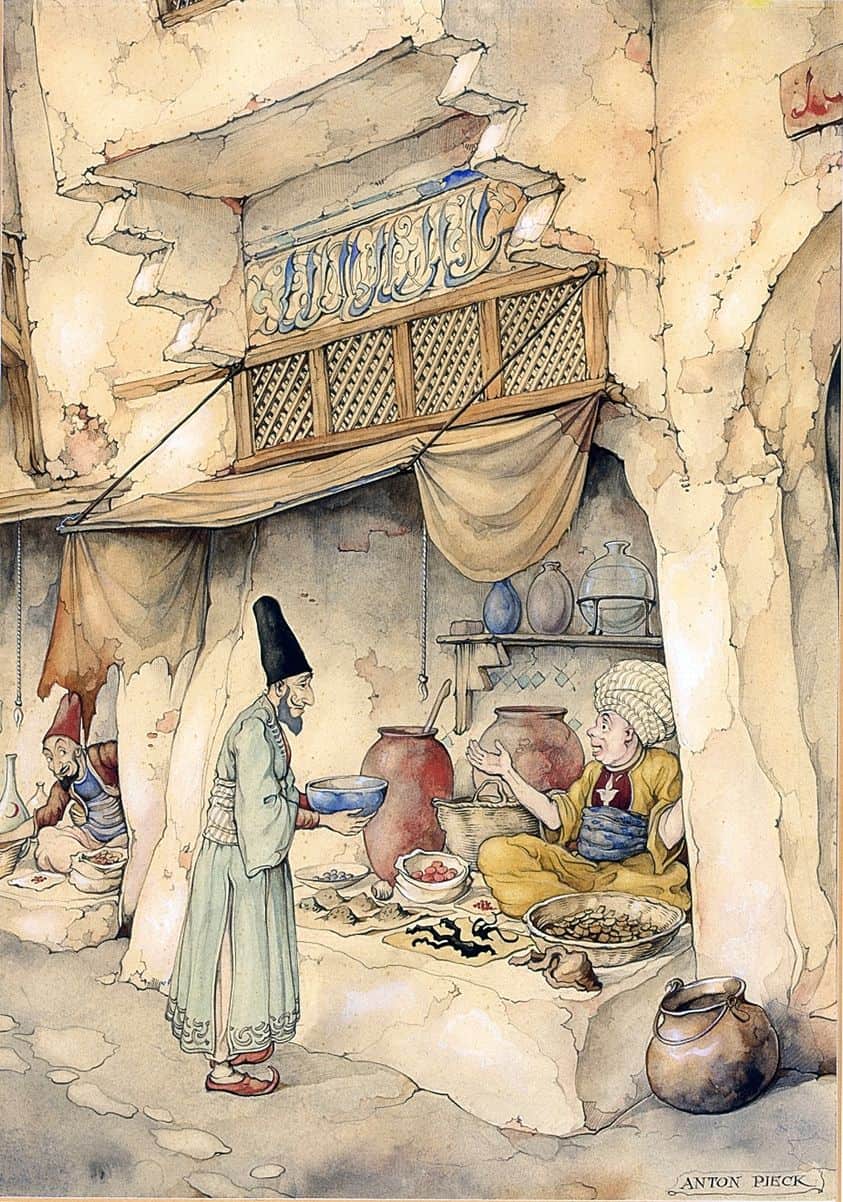
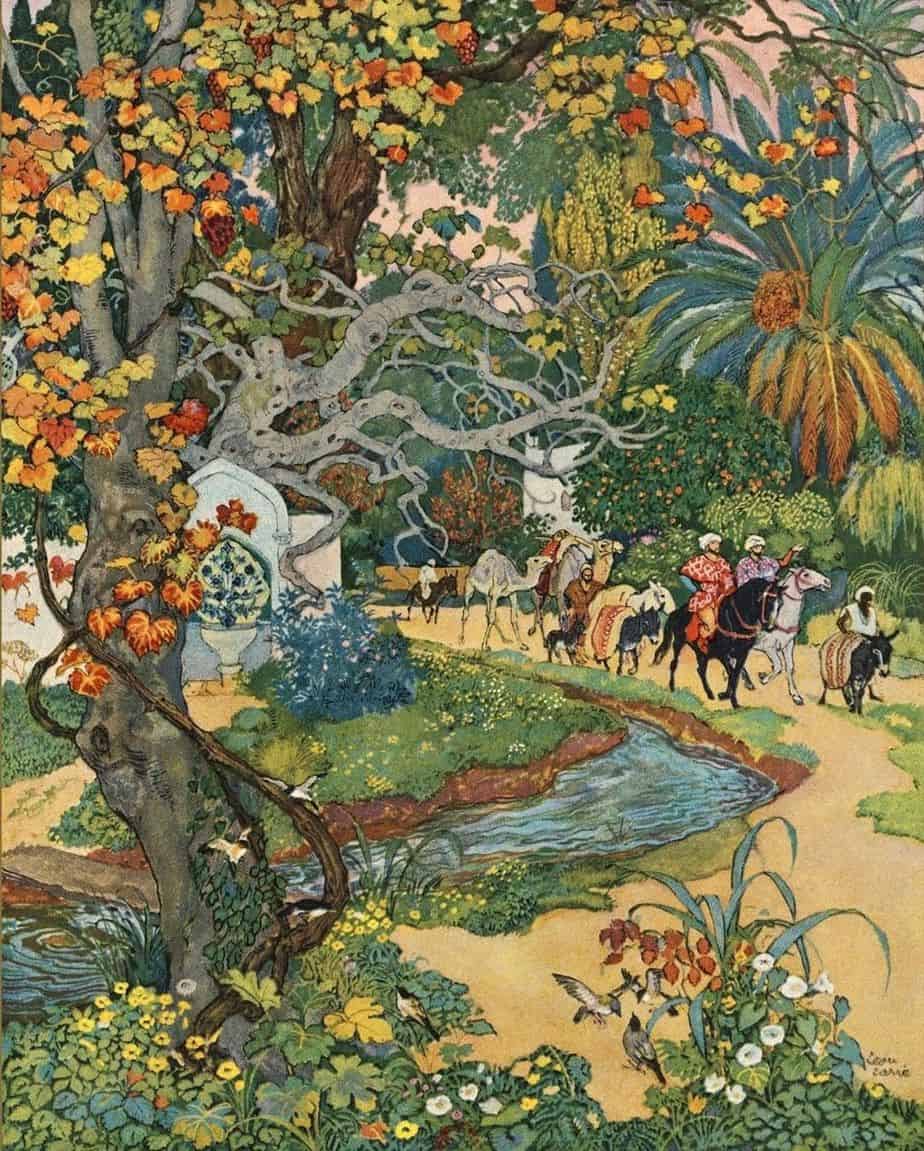
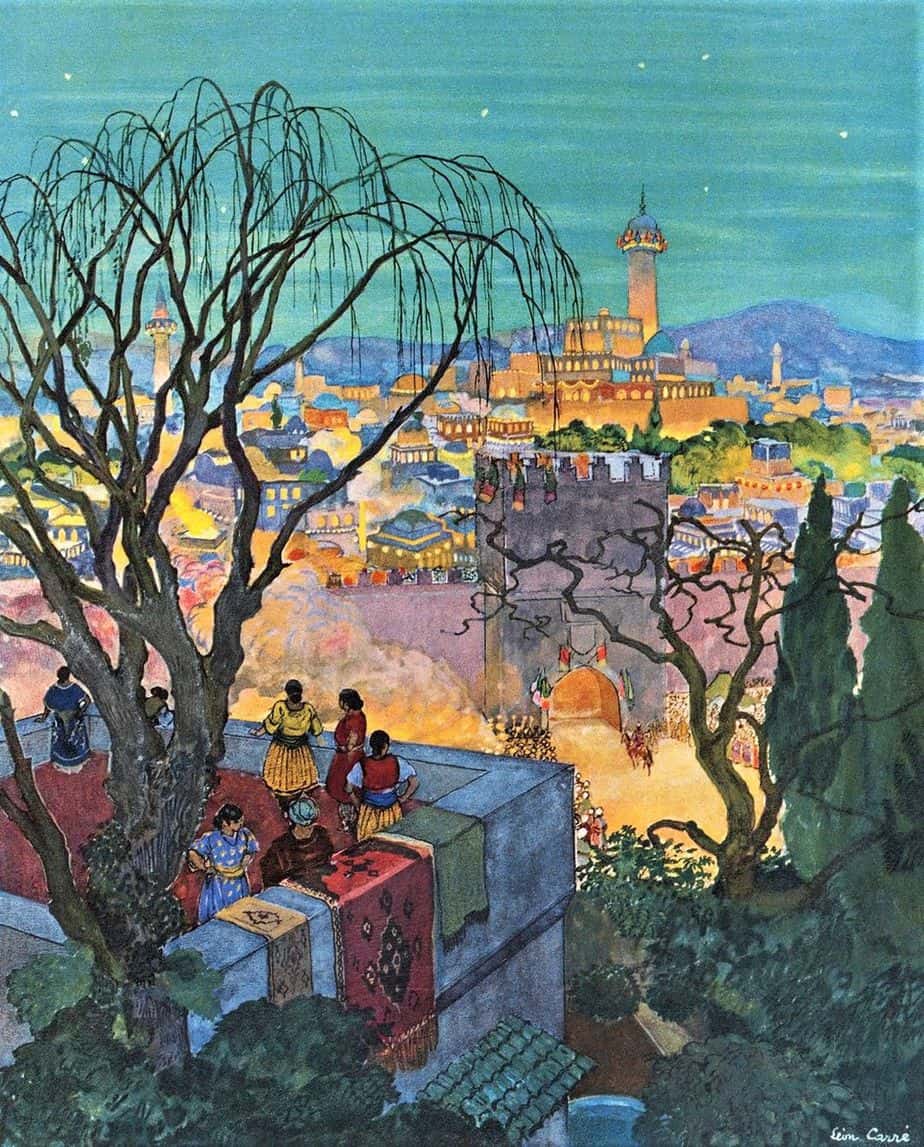
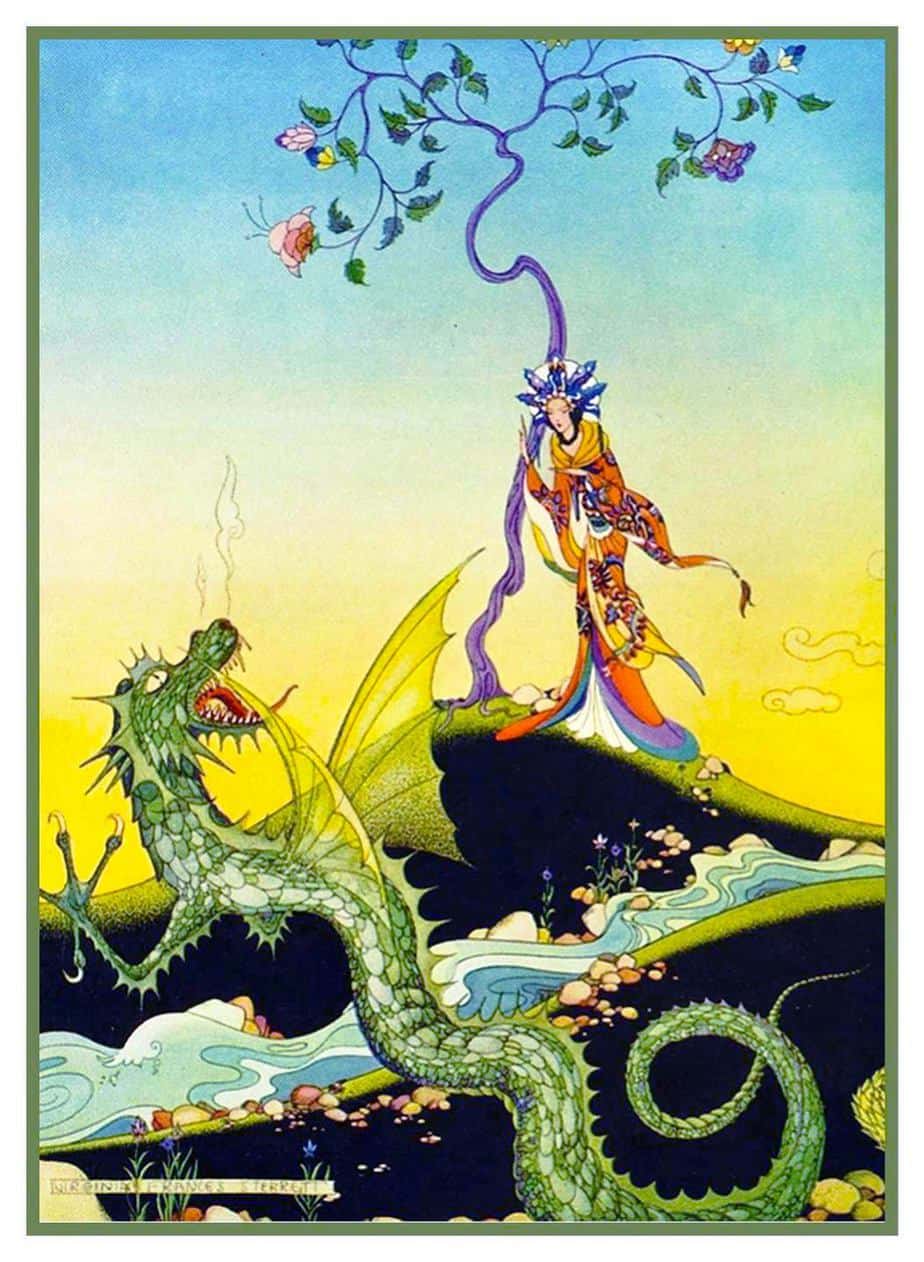
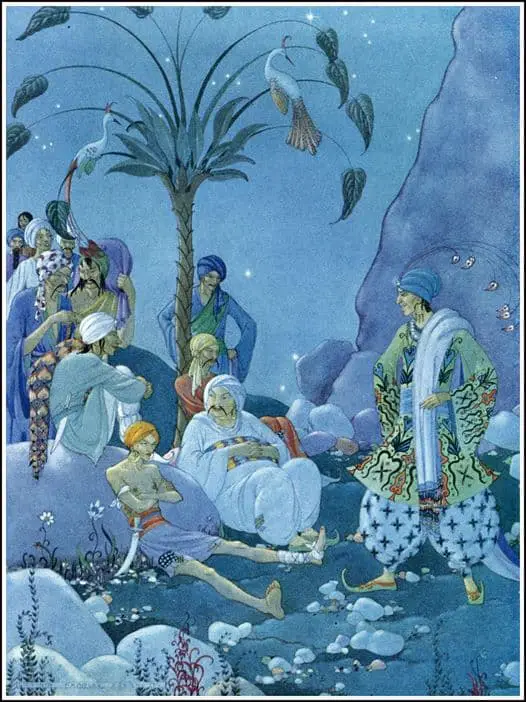
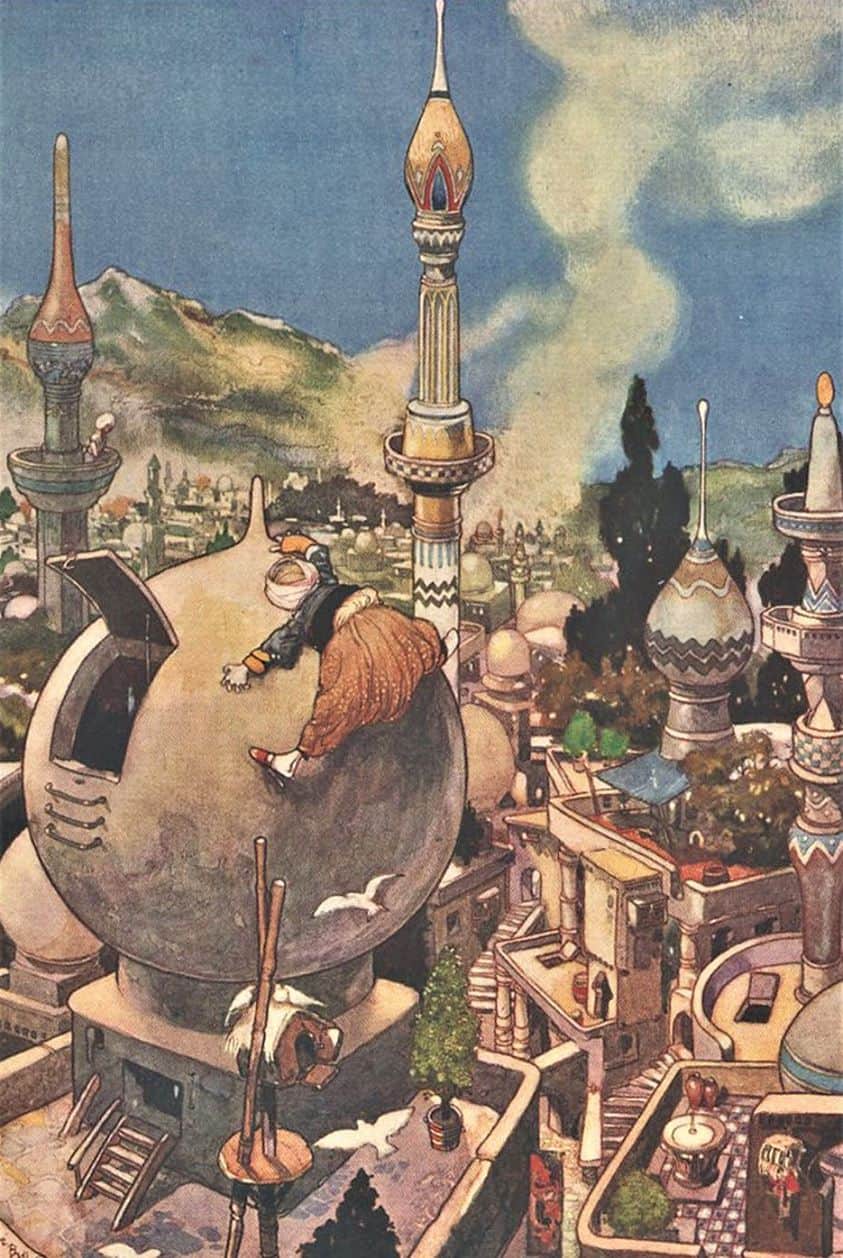
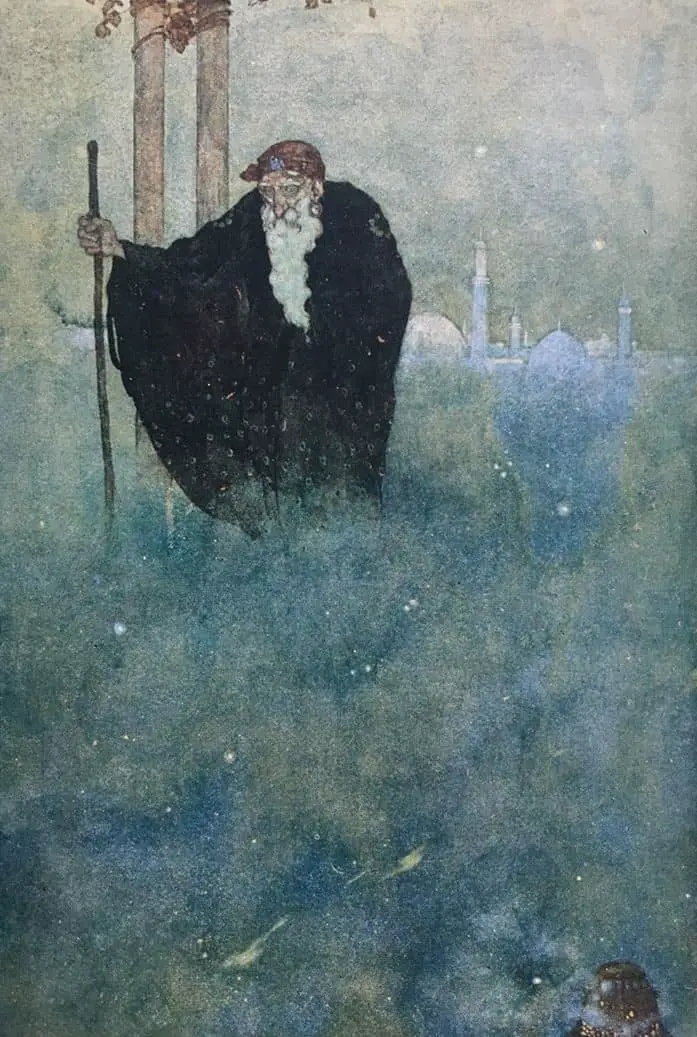


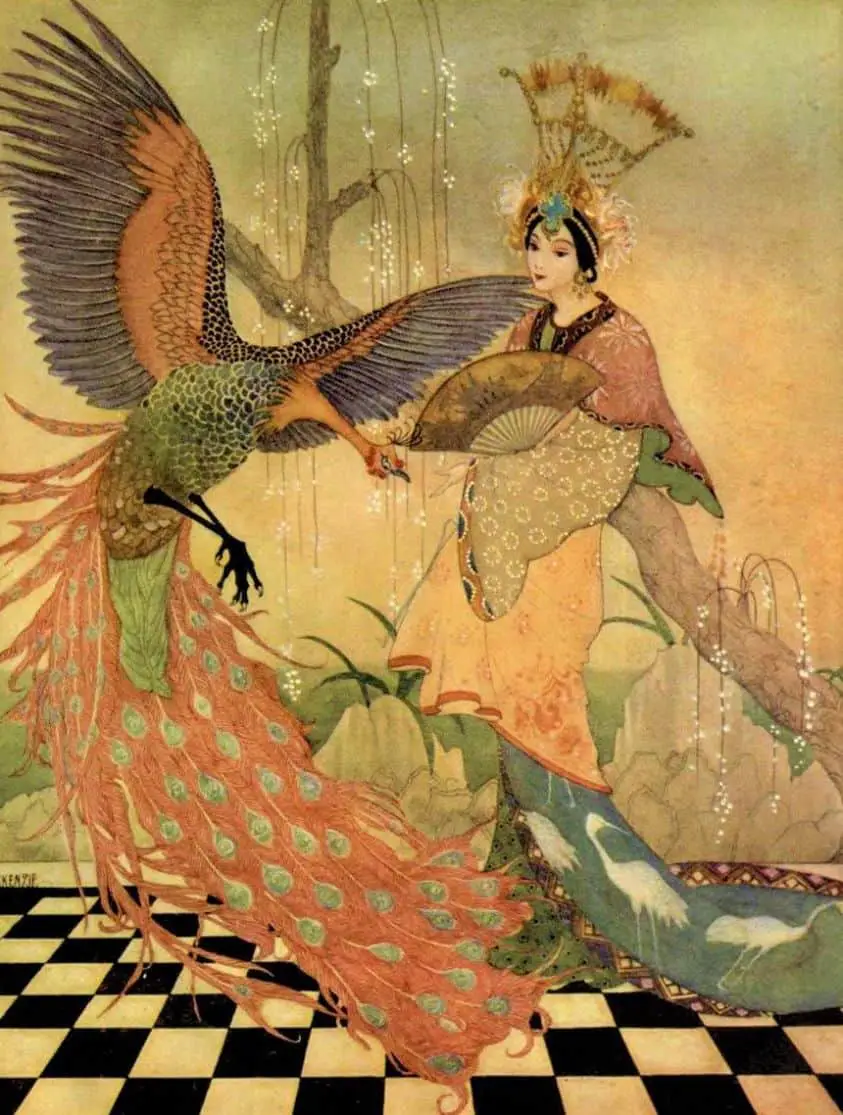
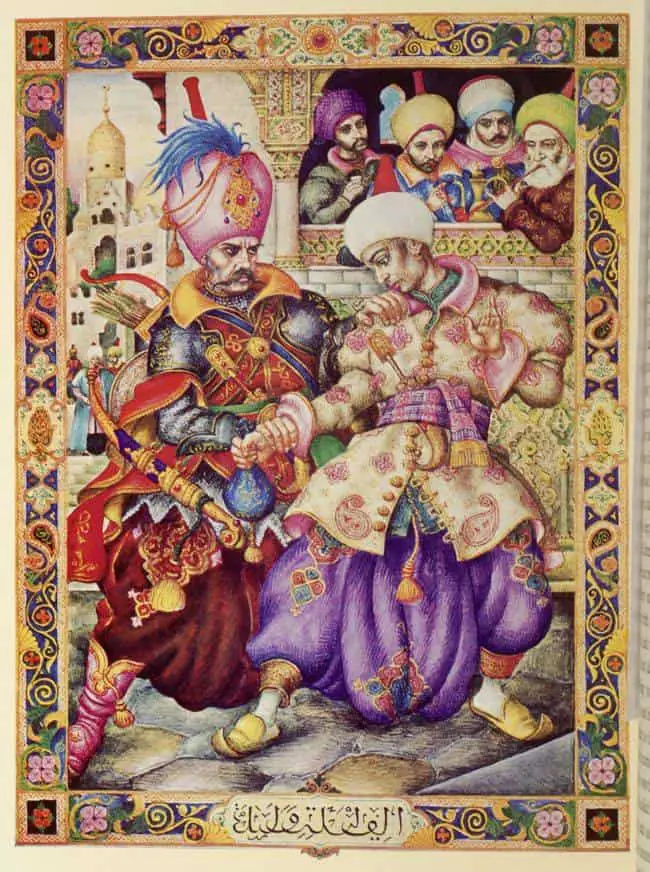
Header image was created with Midjourney AI.
